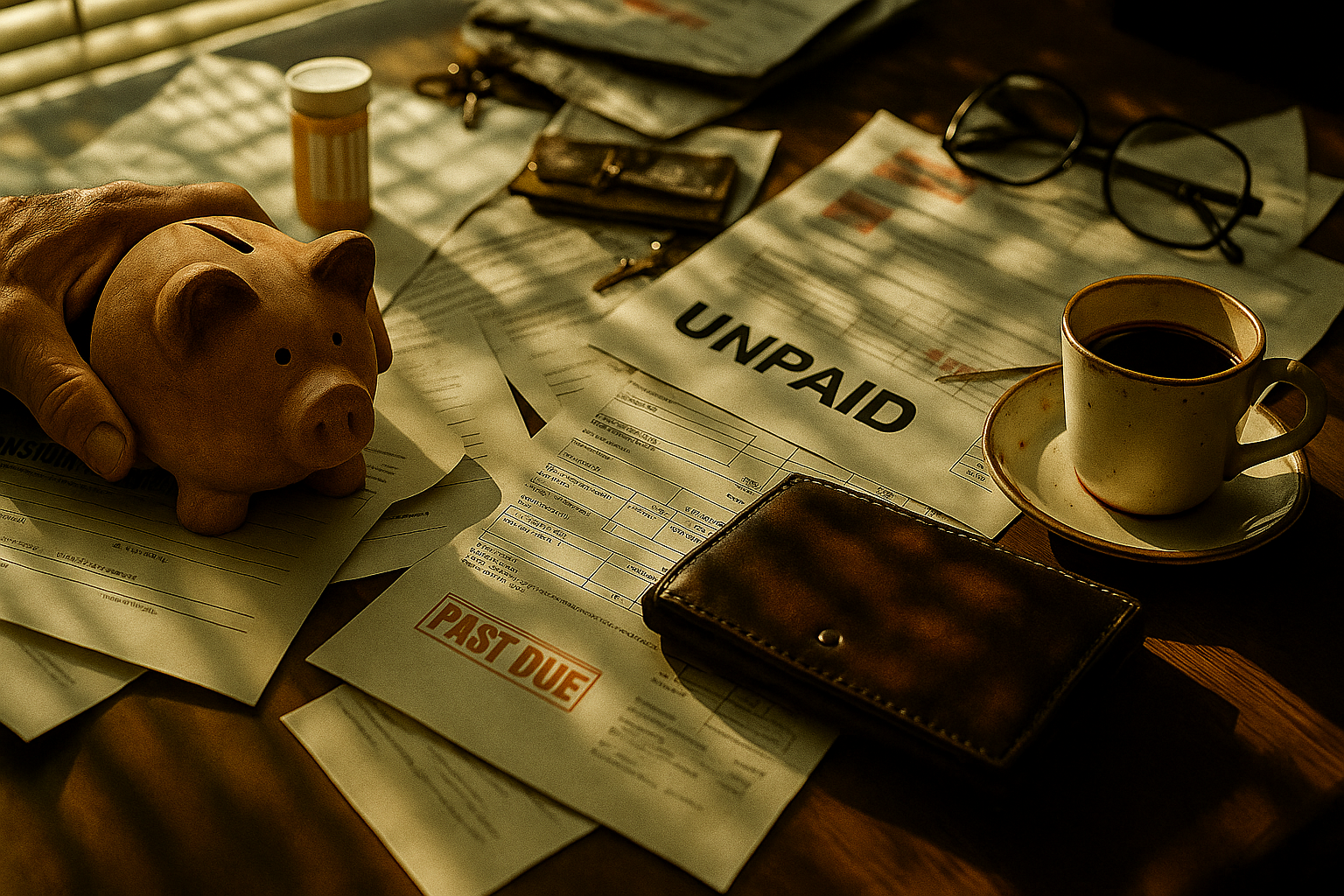You’ve worked decades to build your pension pot, but the shift from accumulation to drawdown can be treacherous territory. Many retirees make costly mistakes that permanently damage their financial security, from withdrawing too much in early retirement to completely misunderstanding tax implications. These errors aren’t just minor setbacks—they’re retirement-wrecking decisions that can leave you scrambling for income when you should be enjoying your golden years. Here’s what you must avoid.
Withdrawing Too Much Too Early in Retirement

When you’re enthusiastic to enjoy your newfound freedom in retirement, it’s tempting to withdraw large amounts from your pension pot early on. However, this approach can severely damage your long-term financial security.
Taking excessive withdrawals early depletes your fund when it has the most time to grow through compound interest. You’ll also face sequence of returns risk – if markets perform poorly during your initial retirement years, heavy withdrawals can permanently reduce your pension’s recovery potential.
Early large withdrawals rob your pension of crucial compound growth time and expose you to devastating sequence of returns risk.
Consider the 4% rule as a starting guideline, though your personal circumstances may require adjustments.
Front-loading your spending might seem appealing, but it often leads to financial stress later when your options become limited and your fund can’t sustain your lifestyle needs.
Ignoring Market Volatility and Sequence of Returns Risk
Market volatility presents one of the most underestimated threats to pension drawdown success, yet many retirees fail to account for its devastating impact on their long-term financial security.
You’re particularly vulnerable to sequence of returns risk during your retirement’s early years. When markets decline while you’re withdrawing funds, you’ll deplete your portfolio faster than anticipated. This creates a permanent reduction in your pension pot’s ability to recover during subsequent market upswings.
You can’t simply rely on long-term average returns when planning withdrawals. Poor market performance early in retirement compounds the damage of regular withdrawals, potentially forcing you to reduce your lifestyle or exhaust your savings prematurely.
Consider flexible withdrawal strategies and maintain adequate cash reserves to weather market downturns without derailing your retirement plans.
Failing to Diversify Investment Portfolio Adequately

Although diversification represents a fundamental investment principle, countless pension drawdown investors concentrate their holdings in familiar sectors or home markets, creating dangerous exposure to single points of failure.
You’re particularly vulnerable when you overweight technology stocks, property investments, or your home country’s equity market.
This concentration risk becomes amplified during drawdown because you can’t wait for market recoveries. If your portfolio lacks geographical, sectoral, and asset class diversification, you’ll face forced selling during downturns, permanently eroding your pension pot.
You should spread investments across developed and emerging markets, multiple sectors, bonds, equities, and alternative assets.
Don’t let familiarity bias guide your decisions. Instead, construct a globally diversified portfolio that can weather various economic storms while providing sustainable income throughout retirement.
Overlooking Tax Implications of Drawdown Timing
The timing of your pension withdrawals can greatly impact your overall tax burden, yet many retirees fail to contemplate how different withdrawal strategies affect their long-term financial position.
Strategic pension withdrawal timing dramatically reduces tax burden, yet most retirees overlook how different approaches impact their long-term financial health.
You’ll face varying tax rates depending on when you access different pension pots and how much you withdraw annually.
Drawing too much in a single tax year can push you into higher tax brackets, unnecessarily increasing your liability. Conversely, you might miss opportunities to utilize your personal allowance and basic rate band efficiently across multiple years.
You should consider spreading withdrawals strategically, coordinating pension drawdown with other income sources, and timing larger withdrawals during lower-income years.
Planning withdrawal timing around your state pension commencement and any employment income can optimize your tax efficiency greatly.
Not Accounting for Inflation Impact on Future Income

While many retirees focus on their immediate withdrawal needs, they often underestimate how inflation will erode their purchasing power over decades of retirement.
What seems like adequate income today won’t stretch as far in ten or twenty years.
You’re making a critical error if your drawdown strategy doesn’t factor in inflation’s compound effect. A 3% annual inflation rate means your expenses will roughly double every 23 years.
That comfortable £30,000 annual withdrawal you’ve planned? It’ll feel like £15,000 in purchasing power by your mid-80s.
Don’t rely solely on fixed withdrawals or conservative investments. You’ll need growth-oriented assets and inflation-adjusted withdrawal strategies.
Consider Treasury Inflation-Protected Securities, equity investments, or drawdown plans that automatically increase your withdrawals annually to maintain your lifestyle throughout retirement.
Neglecting to Plan for Healthcare and Long-Term Care Costs
Beyond typical retirement expenses, healthcare costs represent one of the most significant and unpredictable threats to your pension drawdown strategy.
You’re likely underestimating these expenses, which typically increase faster than general inflation rates.
Long-term care costs can devastate your retirement savings. Nursing home care averages $100,000+ annually, while home healthcare services cost $60,000+ per year.
Without proper planning, you’ll face impossible choices between depleting your pension pot or receiving inadequate care.
You should factor healthcare inflation into your drawdown calculations and consider long-term care insurance.
Set aside dedicated healthcare reserves separate from your general retirement fund.
Don’t assume government programs will cover everything – they won’t.
Start planning early, as healthcare needs become more expensive and harder to insure as you age.
Making Emotional Investment Decisions During Market Downturns
When markets plummet and your pension fund loses significant value, you’ll face intense pressure to abandon your carefully planned drawdown strategy. Fear drives many retirees to sell investments at market lows, crystallizing losses that might’ve recovered over time. This emotional response can devastate your retirement income permanently.
Fear-driven selling during market crashes turns temporary losses into permanent retirement income devastation that could have recovered with patience.
You might also panic and move everything into “safe” investments like cash, missing potential recovery gains. Alternatively, you may stop taking withdrawals entirely, disrupting your lifestyle and budget.
Some retirees make the opposite mistake, increasing withdrawals to maintain their lifestyle despite portfolio losses.
Combat these urges by establishing clear rules before downturns occur. Set predetermined withdrawal rates, maintain emergency funds, and remember that market volatility is temporary while emotional decisions create lasting consequences.
Underestimating Life Expectancy and Longevity Risk
Most retirees consistently underestimate how long they’ll live, creating a dangerous gap between their financial planning and reality. You might plan for a 20-year retirement but actually live 30 years, leaving you financially vulnerable in your later years.
This miscalculation stems from outdated life expectancy data and wishful thinking. You’re likely healthier than previous generations, with better healthcare extending lifespans considerably.
Women typically live longer than men, yet couples often plan using male life expectancy.
Longevity risk means your money runs out before you do. Combat this by planning for at least one spouse to reach 95, adjusting withdrawal rates accordingly, and considering annuities for guaranteed income.
Don’t let optimism about your lifespan become your financial downfall.
Lacking a Flexible Review and Adjustment Strategy
Since pension drawdown spans decades through changing economic conditions, you’ll face inevitable shifts that demand strategy adjustments—yet many retirees lock themselves into rigid withdrawal plans that can’t adapt to reality.
Market volatility, inflation changes, health costs, and personal circumstances don’t follow your original retirement timeline. You need regular reviews—ideally annually—to assess whether your withdrawal rate remains sustainable.
Your strategy should accommodate reducing withdrawals during market downturns and potentially increasing them during strong performance periods. Consider establishing spending priorities: essential expenses versus discretionary spending you can cut if needed.
Don’t ignore warning signs like portfolio depletion faster than expected or significant life changes requiring different income levels.
Flexibility means preserving your financial security while maintaining quality of life throughout retirement’s unpredictable journey.
Conclusion
You’ve learned about the critical mistakes that can derail your retirement security. Don’t let these pitfalls catch you off guard. Take action now by reviewing your current drawdown strategy, diversifying your investments, and planning for tax efficiency. Remember, you can’t afford to set it and forget it. Stay flexible, monitor market conditions regularly, and adjust your approach as circumstances change. Your future financial security depends on avoiding these costly errors.

